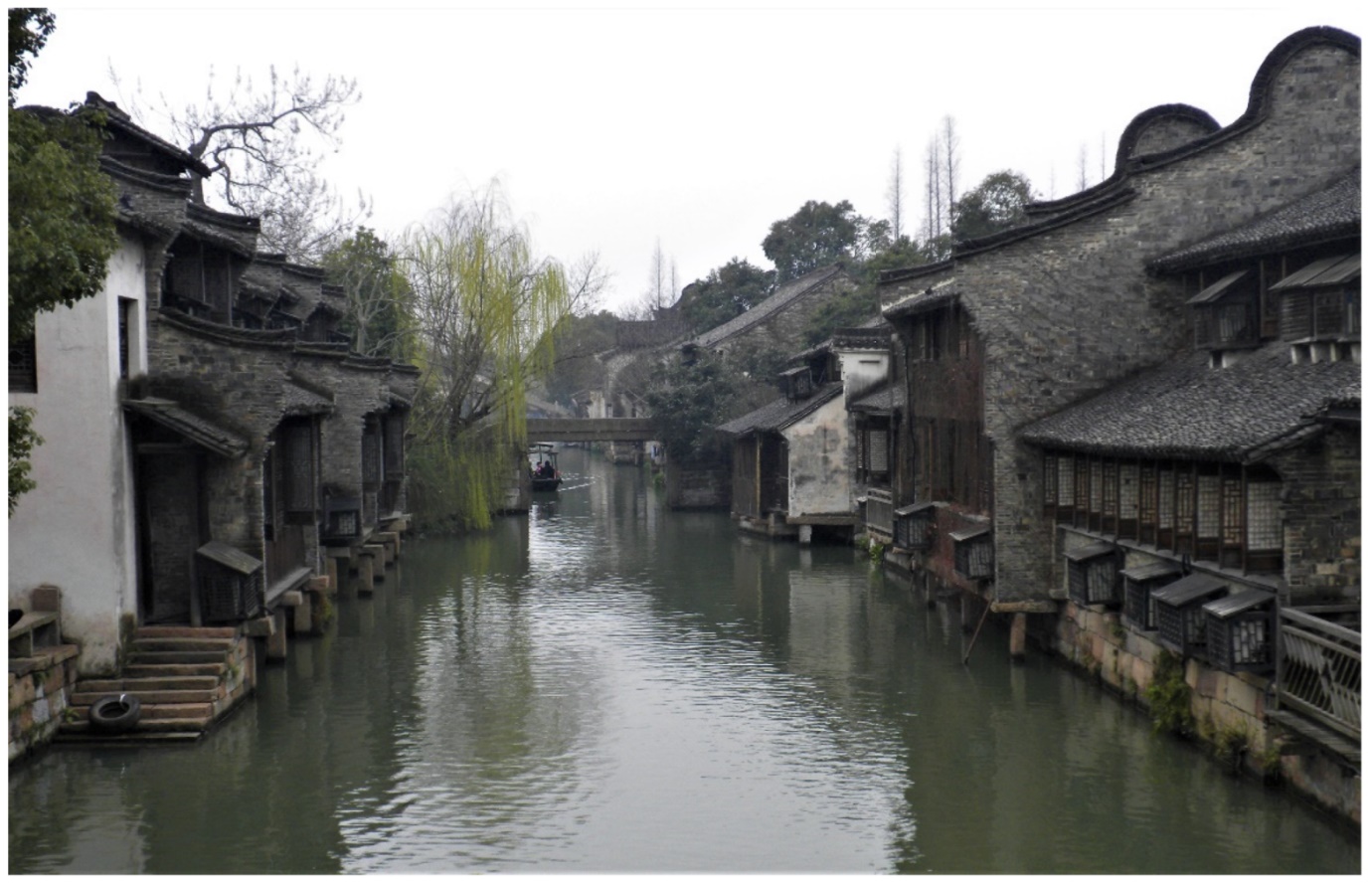Urban Heritage Conservation of China’s Historic Water Towns and the Role of Professor Ruan Yisan: Nanxun, Tongli, and Wuzhen
Heleni Porfyriou

Characteristic waterfront houses of Wuzhen, overhanging the canals and supported by log piles or stone pillars (H. Porfyriou, 2015)
Abstract
Between the 13th and the 19th century, hundreds of water towns flourished in China along the Grand Canal and to the south of the Yangtze river, the latter being the focus of this paper. Despite their long history, water towns still lack a comprehensive account of their urban history and development, yet they have become world famous as tourist destinations. Initially branded under titles such as the “Venice of the East” or the “Venice of China”, they are visited nowadays, for their own sake and not as surrogates of Venice, by millions of Chinese tourists. Focusing on the urban form and heritage of the three historic water towns of Nanxun, Tongli and Wuzhen, and on their conservation planning as promoted by Professor Ruan Yisan since the mid-1980s, the aim of this paper is twofold. On one hand, the aim is to identify and examine, through personal observation and secondary sources, the urban patterns and morphology of these places; on the other hand, to explore through his publications the impact of Professor Ruan Yisan—a (if not the) key figure -- in their conservation and tourist development. The paper’s broader aim is to contribute to a more systematic analytical approach towards the urban form of Chinese historic water towns as a basis for further research and heritage conservation planning.
Porfyriou, H. “Urban Heritage Conservation of China’s Historic Water Towns and the Role of Professor Ruan Yisan: Nanxun, Tongli, and Wuzhen.” Heritage (MDPI) 2, no. 3 (2019). https://www.mdpi.com/2571-9408/2/3/149/htm


